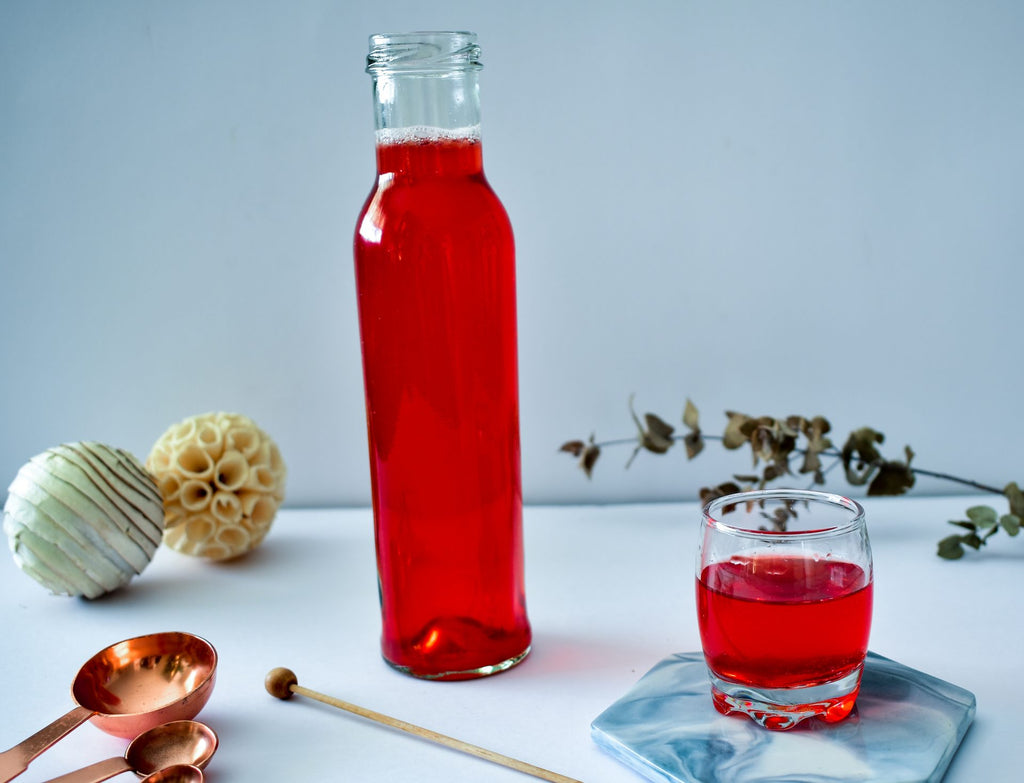Your Cart is Empty
$9.95 Shipping Australia wide - free on orders over $200. Afterpay available.
$9.95 Shipping Australia wide - free on orders over $200. Afterpay available.
$9.95 Shipping Australia wide - free on orders over $200. Afterpay available.
September 19, 2017 6 min read
Have you tried Kombucha yet? The delicious fermented tea has become a popular drink option in super markets, health food stores and cafes across the country and for good reason. Praised for it’s health benefits, packed full of antioxidants and probiotics, Kombucha is not only tasty but good for you too.
If you’re new to kombucha, then to put it simply, kombucha is simply fermented tea. What is fermentation you say? Fermentation is the process whereby microorganisms such as bacteria and yeast break down organic compounds (such as carbohydrates – i.e. sugars) into other simpler molecules. If you’re a little turned off by that thought, then it might surprise you to know that a lot of the common everyday foods you are familiar with such as bread, yoghurt, cheese, wine and beer owe their characteristic flavour to fermentation.
The human body can be considered a super organism comprised of thousands of cells, with bacteria estimated to outnumber human cells by 10 to 1. The gut itself is estimated to contain some 1000 distinct different bacterial species hosting some 100,000,000,000,000 micro organisms. It’s no surprise then that science has had a tough time proving that improving gut health can have a beneficial impact on your health, but recent studies have started to show just this, with links to a treatment for MS, protecting against type 1 diabetes, improving autism symptoms, influencing weight loss, treating peanut allergies, treating heart disease, improving cancer treatments and even affecting your brain!

Due to its popularity, commercial Kombucha can be quite expensive, costing up to $4 per bottle. The good news is, it’s relatively simple to make a big batch of your own Kombucha at home to last you. While a lot of people have been brewing their own Kombucha for years, it is definitely growing in popularity with many more jumping on the bandwagon and growing their own scoby’s to brew the tasty, healthy drink themselves.
If you want to take the leap and try your hand at making a brew, you can follow our simple instructions below for a delicious raspberry drink filled with antioxidants and probiotics.
What you will need:
*Kombucha scoby: This actually stands for “Symbiotic Colony Of Bacteria & Yeast”, it is a living colony of bacteria and is what will eat the sweetened tea to create an acidic beverage filled with antioxidants and probiotics. A scoby may also be referred to as a ‘mother’ or ‘mushroom’. You can purchase scoby’s from health food stores or ask a friend who is already brewing their own Kombucha, they will probably be quite happy to let you take a spare scoby off their hands. ^Kombucha tea or vinegar: This is a previous batch of Kombucha (the vinegar is created when a tea brew has been left to brew for a longer period of time and become more acidic to create a vinegar). Again, this can be purchased from health food stores or may be acquired from a friend’s previous batch.

Process:
Fermenting time: The brewing time will be based on your personal taste preference, the longer it is left to ferment, the more acidic it will taste, eventually turning into Kombucha vinegar. After 8 days, you should start tasting your brew daily (ensure you rinse the spoon with white vinegar first), once it is at your preferred taste you can remove the scoby and a cup of the Kombucha to start a second batch and repeat the steps above. Your Kombucha can be bottled and enjoyed at this stage, however to make a raspberry Kombucha, you will need to complete a second ferment.

Recipe for Raspberry Kombucha A raspberry Kombucha is a delicious refreshing drink that is sweet and a little bit tangy, has a beautiful rich colour and is guaranteed to go down well with your friends and family.
What you will need:
Process:

Tip – Sealing your jar will prevent the gas created during your second ferment from escaping and will result in a carbonated “fizzy” taste. The raspberries can also be saved to use in smoothies, if you are not going to use them straight away freeze them so they do not spoil. If you are new to Kombucha, you should drink only a small amount at a time to allow your body to slowly adjust to the new beneficial microbes.
Additional notes on brewing Kombucha:
Good luck and enjoy your healthy and tasty brew!

December 01, 2021 4 min read
June 21, 2021 3 min read